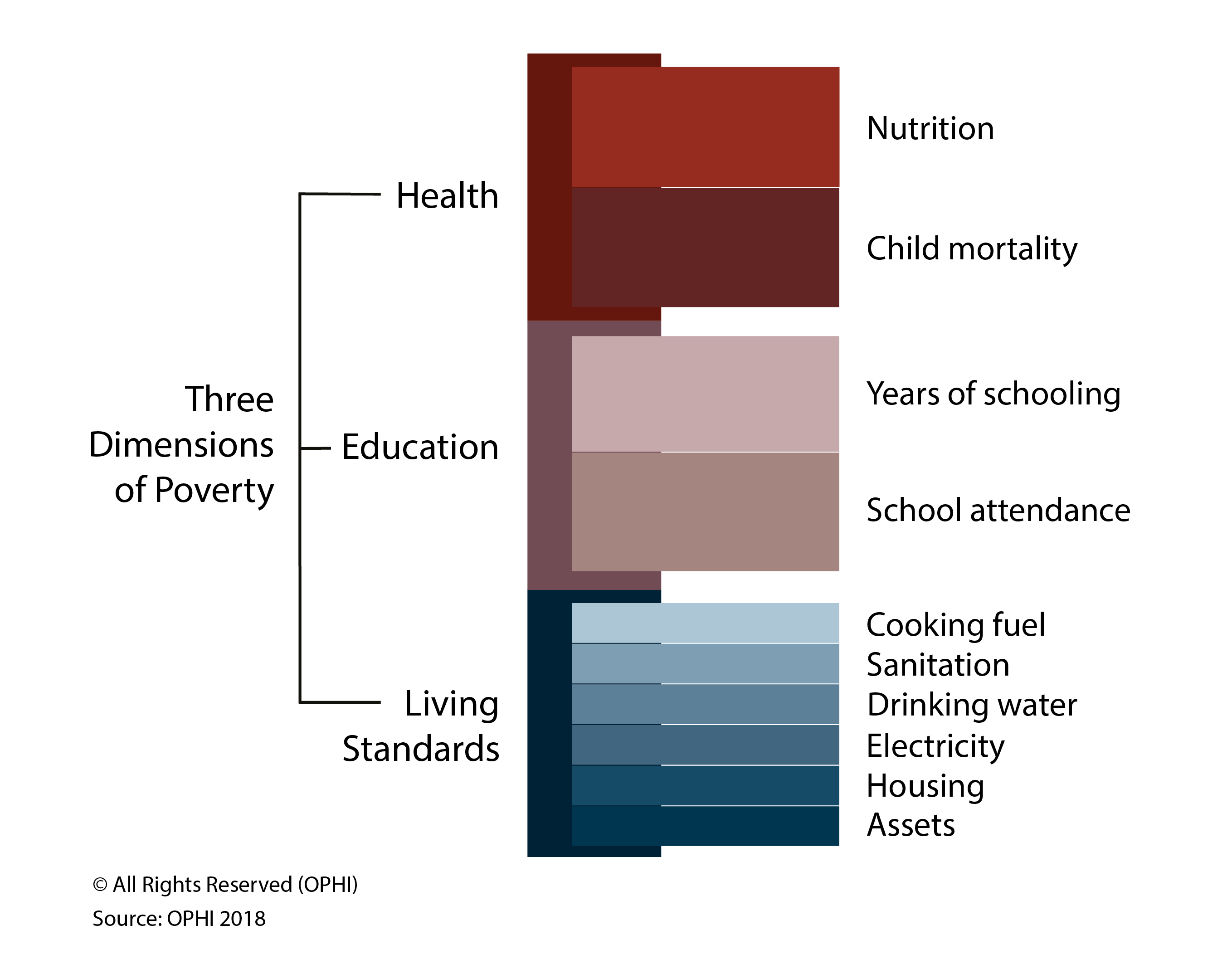What is the global MPI?
The global Multidimensional Poverty Index (MPI) is an international measure of acute multidimensional poverty covering over 100 developing countries. It complements traditional monetary poverty measures by capturing the acute deprivations in health, education, and living standards that a person faces simultaneously.
The MPI assesses poverty at the individual level. If a person is deprived in a third or more of ten (weighted) indicators, the global MPI identifies them as ‘MPI poor’. The extent – or intensity – of their poverty is also measured through the percentage of deprivations they are experiencing.
The global MPI shows who is poor and how they are poor and can be used to create a comprehensive picture of people living in poverty. It permits comparisons both across countries and world regions, and within countries by ethnic group, urban/rural area, subnational region, and age group, as well as other key household and community characteristics. For each group and for countries as a whole, the composition of MPI by each of the ten indicators shows how people are poor.
This makes the MPI and its linked information platform invaluable as an analytical tool to identify the most vulnerable people – the poorest among the poor, revealing poverty patterns within countries and over time, enabling policy makers to target resources and design policies more effectively.
The global MPI was developed by OPHI with the UN Development Programme (UNDP) for inclusion in UNDP’s flagship Human Development Report in 2010. It has been published annually by OPHI and in the HDRs ever since.
Global MPI Dimensions and Indicators
In the table below, the ten indicators are presented with their weights and basic definitions.
In 2018 the Global MPI was revised to better reflect the Sustainable Development Goals (SDGs). This process changed five of the ten indicators from the original MPI: nutrition, child mortality, years of schooling, housing and assets. For more info on the 2018 revision, please see the MPI Methodological Note 46, OPHI Working Paper 121 and OPHI Research in Progress 56a. The corresponding SDG area to each indicators is set out in the table.
| Dimensions of Poverty | Indicators of Poverty | Person is deprived if living in a household where... | Weight of indicator | Corresponding SDG Area |
|---|---|---|---|---|
| Health (1/3) | Nutrition | Any person under 70 years of age for whom there is nutritional information is undernourished. | 1/6 | SDG 2: Zero Hunger |
| Child mortality | A child under 18 has died in the household in the five-year period preceding the survey. | 1/6 | SDG 3: Health and Well-being | |
| Education (1/3) | Years of schooling | No eligible household member has completed six years of schooling. | 1/6 | SDG 4: Quality Education |
| School attendance | Any school-aged child is not attending school up to the age at which he/she would complete class 8. | 1/6 | SDG 4: Quality Education | |
| Living Standards (1/3) | Cooking fuel | A household cooks using solid fuel, such as dung, agricultural crop, shrubs, wood, charcoal, or coal. | 1/18 | SDG 7: Affordable and Clean Energy |
| Sanitation | The household has unimproved or no sanitation facility or it is improved but shared with other households. | 1/18 | SDG 6: Clean Water and Sanitation | |
| Drinking water | The household’s source of drinking water is not safe or safe drinking water is a 30-minute or longer walk from home, roundtrip. | 1/18 | SDG 6: Clean Water and Sanitation | |
| Electricity | The household has no electricity. | 1/18 | SDG 7: Affordable and Clean Energy | |
| Housing | The household has inadequate housing materials in any of the three components: floor, roof, or walls. | 1/18 | SDG 11: Sustainable Cities and Communities | |
| Assets | The household does not own more than one of these assets: radio, TV, telephone, computer, animal cart, bicycle, motorbike, or refrigerator, and does not own a car or truck. | 1/18 | SDG 1: No Poverty |



